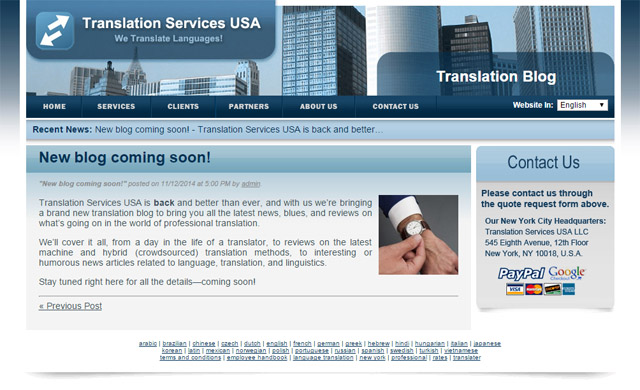Localizing WordPress – PART 3 – WordPress Multilingual Plugins

This is Part 3 of a 3 part series. If you have not the first two parts, we recommend starting with Part 1 – WordPress Multisite for Localization: Overview. In today’s post, we will explain how to use WordPress plugins to make your website multilingual.

Most people serious about connecting with a worldwide viewership or customer base have websites of their own. In building their websites, a good number have used WordPress as their Content Management System. When it comes to WordPress Multisite, they offer the advantage of two or more websites, each for one language. This is clean way of maintaining different language websites, but this also requires technical knowledge to manage servers and the management of server resources.
Basically, you’ve got to install WordPress in more than one language and install a plugin that will move from one to language to another. And you will have to install the .mo/.po files for the languages you want by picking the same for the language you’re interested in.
For that reason, we are dedicating Part 3 of this series to alternative methods for getting your website translated. We’ve looked up a few plugins that help keep it as simple as possible, and have picked out a few of the more popular ones for you to check out:
However, it’s possible to make your WordPress site multilingual in many ways.
Making your WordPress Multilingual
WordPress, by default is a single language system. The WordPress community has stepped up smartly to introduce numerous plugins that can do translations quite effectively. Some plugins are premium plugins, but there are many free ones as well which can do the job effectively. Individual features may vary from plugin to plugin, the way the plugins go about their job is somewhat alike.
- Translation is directed to an external resource.
- Many posts are created, each for one language, all linked together indicating they are translated versions.
- All language alternatives for each post stored in a single post.
- Maintaining multiple sites, each for one language and using a plugin that pings back and forth.
Keep in mind, whichever method you choose, you will be responsible for adding the content in different languages to the website. Translation is not done for you. If automatic translation is offered, it will not be up to the mark, but a few can make it easier for you by allowing manual editing. Some plugins will do this automatically. Pay good attention while translating the widget area.
It’s also quite important to make sure your translation plugin is compatible with your theme. It’s a good idea to take a full backup of your website before installing any plugin if you aren’t sure about compatibility.




